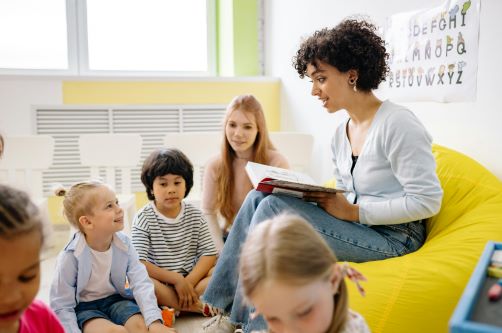

Have you ever sat in a classroom and felt like the lessons weren’t designed for you? Maybe the material moved too fast, or the teacher’s approach didn’t click with the way you learn. Now imagine how students with unique learning needs feel when the system doesn’t work for them. It’s frustrating, isolating, and unfair.
Today, classrooms are more diverse than ever—not just in terms of culture and language, but also in how students process information and engage with the world. Supporting these students isn’t just a responsibility; it’s an opportunity to build a system where everyone can thrive.
With rising awareness of neurodiversity, increased diagnoses of learning differences, and a growing push for inclusive education, the stakes couldn’t be higher. Teachers, parents, and communities are being called to rethink how we approach learning.
In this blog, we will share strategies, insights, and real-world examples of how to support students with diverse learning needs, and why this work matters now more than ever.
Understanding What Diversity in Learning Really Means
Every student is unique, but for some, this uniqueness goes beyond preferences—it shapes how they interact with the world. Diverse learning needs can stem from many factors, including learning disabilities, autism spectrum disorders, ADHD, sensory processing challenges, and emotional or behavioral differences.
These needs aren’t deficits; they’re variations in how brains work. However, traditional education systems often cater to a narrow range of learning styles, leaving many students feeling left out.
For example, think about students with dyslexia. A one-size-fits-all approach to reading can make them feel like they’re failing when, in reality, they just need a different method—like audiobooks or multi-sensory reading strategies—to succeed.
The good news is that more schools are embracing inclusivity. Universal Design for Learning (UDL), a framework that offers multiple ways for students to access material and express what they know, is becoming more common. This shift is a step toward breaking down barriers and empowering all learners.
Comprehension is one of the main factors in ensuring students feel supported and capable of mastering complex material. Providing a grade 12 advanced functions online course to learners who need flexibility helps them access challenging content in a way that matches their pace and abilities. This approach allows students to build confidence while working through difficult concepts. Over time, it nurtures both academic growth and a stronger sense of independence.
The Role of Educators in Addressing Diverse Needs
Teachers are at the heart of creating inclusive classrooms. But let’s be real—it’s not easy to balance the needs of 25 (or more) students while meeting curriculum goals. That’s why professional development and advanced training are so important.
For educators looking to deepen their skills, pursuing a master’s in special education online can be a game-changer. These programs provide the tools to understand, support, and advocate for students with diverse learning needs. They also allow teachers to advance their careers while balancing their existing responsibilities.
Educators with specialized training can bring fresh approaches to the classroom. They’re better equipped to recognize learning differences, adapt lesson plans, and create an environment where every student feels seen and valued. With the rise of online education, accessing this kind of training has never been more convenient.
Strategies for Supporting Students
While systemic change takes time, there are practical steps teachers, parents, and schools can take right now to make a difference:
a) Personalized Learning Plans
One size doesn’t fit all, and personalized plans (like IEPs and 504s) help tailor education to individual needs. These plans outline accommodations, such as extra time on tests or access to technology, to level the playing field.
b) Technology as a Tool, Not a Crutch
Assistive technology, like speech-to-text programs, audiobooks, and apps designed for executive functioning, can transform how students engage with material. The key is to use these tools to enhance learning, not replace teaching.
c) Flexible Teaching Methods
Teachers can mix visual, auditory, and hands-on learning to reach more students. For example, a science lesson might include a video demonstration, a group experiment, and a follow-up discussion. This variety keeps all students engaged.
d) Positive Reinforcement
A little encouragement goes a long way. Praising effort, celebrating progress, and creating a safe space for mistakes help build confidence and resilience.
e) Fostering Peer Support
Encouraging collaboration between students helps build empathy and teamwork. Peer tutoring programs, for instance, allow students to learn from and support one another.
Why This Matters More Than Ever
The world is changing fast, and education needs to keep up. With increasing awareness of mental health and the rise of diverse workplaces, today’s students need more than academic skills—they need to know how to collaborate, empathize, and problem-solve in complex environments.
Investing in inclusive education isn’t just about helping students with diverse learning needs succeed in school; it’s about preparing them for life. When students feel valued for who they are, they’re more likely to reach their full potential.
Beyond that, inclusive classrooms benefit everyone. Studies show that students without learning differences develop greater empathy and better social skills when they learn alongside peers with diverse needs. It’s a win-win situation that builds stronger communities.
Challenges and the Path Forward
Let’s not sugarcoat it—there are challenges. Teachers face time constraints, limited resources, and systemic barriers that make supporting diverse learners harder than it should be. Parents often struggle to advocate for their children in a complex system. And students sometimes face stigma that affects their self-esteem.
But change is happening. Schools are adopting more inclusive policies, parents are raising their voices, and educators are stepping up to make a difference. Community involvement and investment in education will be key to sustaining this momentum.
In the end, it’s not just about teaching—it’s about understanding. Each student brings a unique perspective, a different way of seeing the world. By embracing those differences, we create more than inclusive classrooms; we foster a society that values every voice. The question isn’t whether we can adapt—it’s whether we’re willing to. Because in supporting diverse learners, we learn something invaluable about ourselves. After all, education isn’t just about shaping young minds. It’s about reshaping our own.


